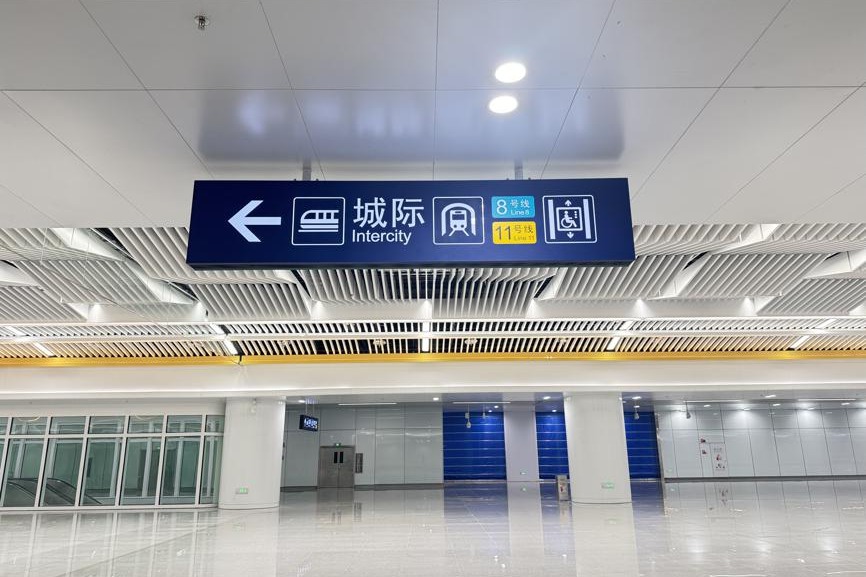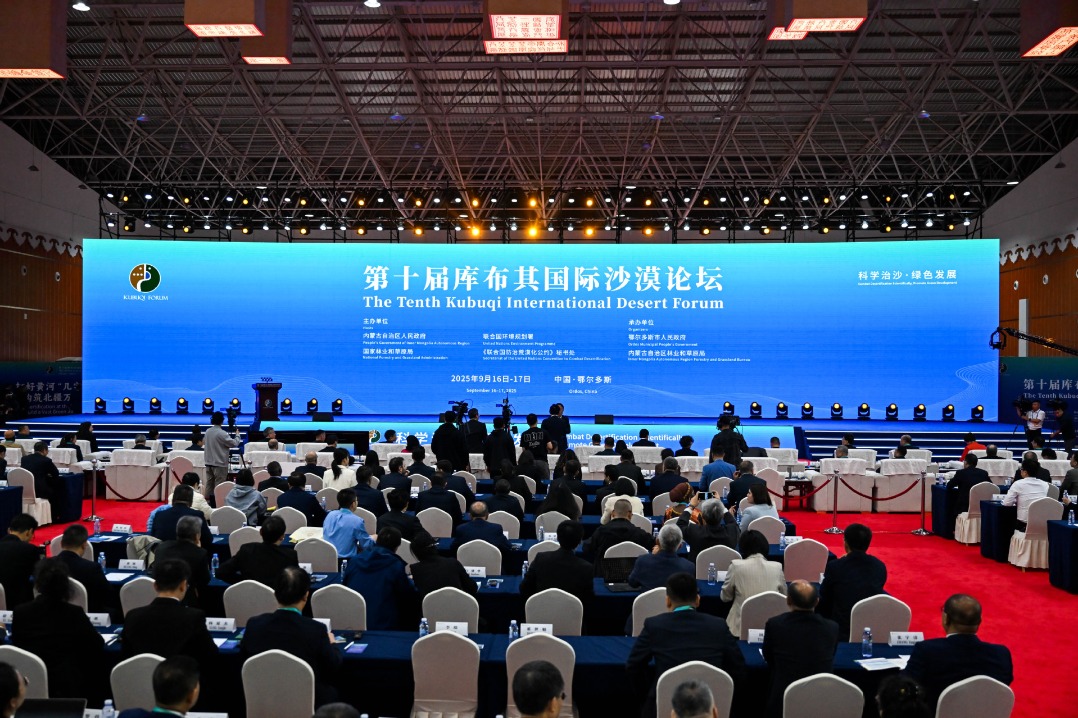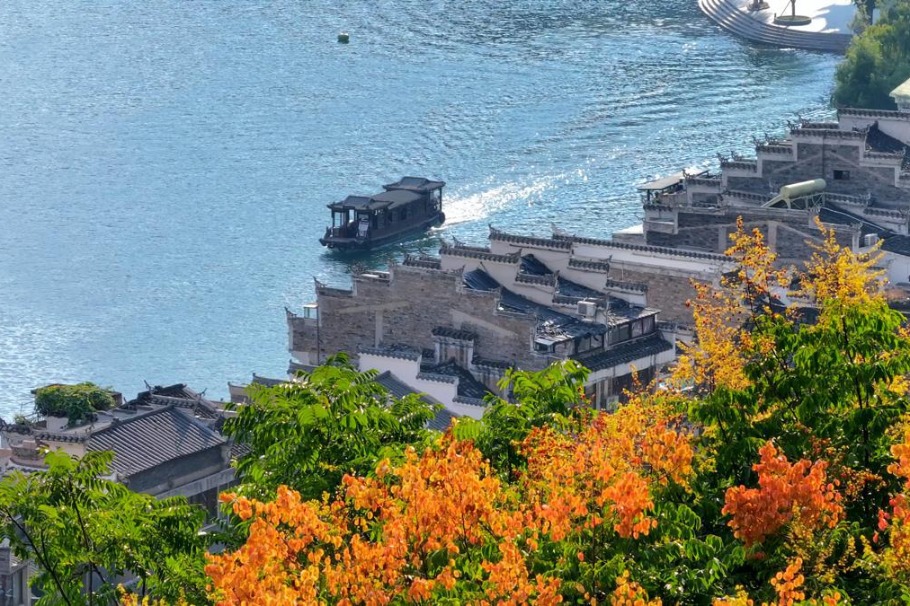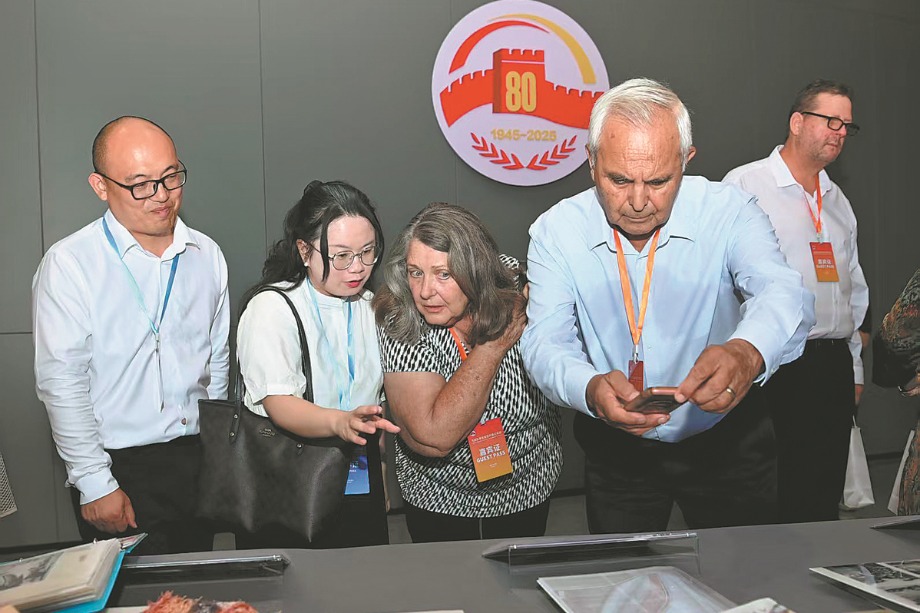Nation leads in reducing ozone-depleting substances

China has phased out 628,000 metric tons of ozone-depleting substances, accounting for half of the total reduction by developing countries as of last year, and is expected to phase out another 90,000 tons this year, according to the Ministry of Ecology and Environment.
The information was disclosed at an event in Beijing to mark World Ozone Day, which falls on Sept 16 every year, and the 40th anniversary of the Vienna Convention for the Protection of the Ozone Layer — which gave rise to the Montreal Protocol on Substances that Deplete the Ozone Layer and the institutions around it.
China has achieved the reductions through a combination of economic, technological, legal and administrative measures aimed at eliminating ozone-depleting substances while guiding industries toward green and low-carbon transformation, Vice-Minister of Ecology and Environment Yu Huiwen said at the event.
In one of the country's latest efforts, the State Council, China's Cabinet, approved a 2025-30 national plan for implementing the Montreal Protocol in April, Yu said. The plan provides a comprehensive action guide for strengthening the control of ozone-depleting substances and powerful heat-trapping gases known as hydrofluorocarbons or HFCs, while ensuring compliance with national targets, he said.
Ozone-depleting substances are widely used in foam-blowing agents and refrigerants. HFCs are often used as replacements because they do not damage the ozone layer, though they are potent greenhouse gases.
Yu said the National Leading Group for the Preservation of the Ozone Layer, established in 1991, has organized a series of meetings to systematically deploy major initiatives and enhance departmental cooperation. Production, sale and use of ozone-depleting substances have been regular targets for law enforcement, and special inspections have been carried out in key industries, he said. A one-on-one support mechanism has also been created to help key regions strengthen compliance and enforcement capabilities, he said.
Tina Birmpili, chief officer of the Multilateral Fund for the Implementation of the Montreal Protocol, praised China's contribution to ozone protection.
"China's engagement in the Montreal Protocol and in the Multilateral Fund is critical for its success, as your industry is shaping markets at a global level," she said.
She added that China's industrial policy and technology strategy, aligned with the protocol, play a significant role in driving technology changes worldwide, including in developing nations classified under Article 5 of the protocol. These countries have relatively low annual consumption of controlled substances.
Birmpili said technology transfer under the multilateral fund has enabled companies in Article 5 countries to better compete internationally and expand production at scale.
"The people of China should be proud that they have been part of a journey that started in 1985 and where we can see the human fingertips in re-establishing balance in nature and averting the collapse of the ozone layer," she said. "I would like to thank you for your commitment and engagement, and I look forward to collaborating with you in the future."
- Nation leads in reducing ozone-depleting substances
- Xiamen, Changji team up on heritage, tourism
- Woman exposed to discarded acid dies
- As bath leisure sector booms, Shenyang gets a training school
- World's longest 'direct' flight prepares for takeoff
- China warns Philippines to stop intruding in its waters






































